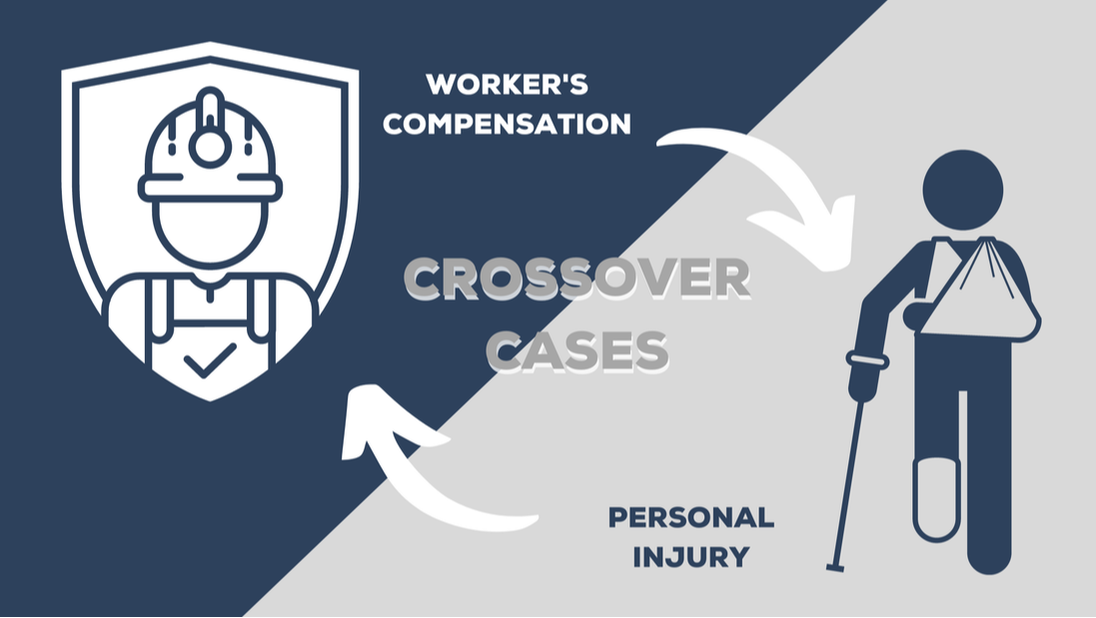|
When the Exclusive Remedy Rule does not apply. Normally, when you are injured at work (California) the law protects both you and your employer under the no-fault ‘Exclusive Remedy’ doctrine. Simply put, under the Exclusive Remedy doctrine, the employer must follow the California Labor Code and provide certain benefits without regard to who was at fault for the injuries sustained by the employee. Most importantly, there are no pain and suffering damages in a Worker’s Compensation case. However, in a Personal Injury case, you can recover Pain and Suffering damages. It is important to determine if you have what I call a ‘Crossover’ case. This means if you were injured at work and the injury was caused by someone who was not employed by the same employer. In that case, you would want an attorney who specializes in both Worker’s Compensation Law and Personal Injury. Examples: You are a driver for Company X. While driving for work, Jane Doe runs a red-light and crashes into you causing personal injuries. You would have both a Personal Injury case and a Worker’s Compensation case. The cases entitled you to different damages. While at work on a construction site, you step in a hole left uncovered by another contractor. You could have a cause of action against the contractor whose employee was responsible for covering the hole. While at work on a construction site, you are standing on scaffolding that collapses. If you were the painter for example, you could have a cause of action against the contractor that built the scaffold. Exception to Exclusive Remedy Rule:
Assault and battery claims have long been a recognized exception to the Exclusive Remedy rule. Examples: A hotel security guard was threatened by his supervisor at gun point and told that he was going to blow the security guard’s head off (Herrick v. Quality Hotels, Inns & Resorts, Inc., (1993) 19 Cal.App.4th 1608, 1612-1614) A waitress employee was violently struck and thrown down by the restaurant co-owner/employer (Magliulo v. Superior Court (1975) 47 Cal.App.3d 760, 762) A co-employee attacked, beat, struck, assaulted, and raped plaintiff employee and employer engaged in positive misconduct by declining to suspend or discharge him (Meyer v. Graphic Arts International Union (1979) 88 Cal.App.3d 176, 177-179) An employer attacked the employee without provocation, tearing his clothes and striking him in the face and body (Conway v. Globin (1951) 105 Cal.App.2d 495, 496-498).
|
Legal BriefsCommon sense notes from Archives
March 2024
Categories
All
|
Browse Our Website |
Contact Information |
Our Location |
The Law Office of Steven H. Henderson and Jill Stern-Henderson serves all communities of Contra Costa County and beyond: Antioch, Brentwood, Clayton, Concord, Danville, El Cerrito, Hercules, Lafayette, Martinez, Moraga, Oakley, Orinda, Pinole, Pittsburg, Pleasant Hill, Richmond, San Pablo, San Ramon and Walnut Creek
Privacy Policy / Terms & Conditions / Accessibility
Privacy Policy / Terms & Conditions / Accessibility
|
©2022 Law Office of Steven H. Henderson & Jill Stern Henderson.
All Rights Reserved. |
|
Site powered by Nicolette A. Munoz Consulting
|




 RSS Feed
RSS Feed
